Daniele
Posts: 1812
Joined: 2/7/2015
Status: offline

|
NAVAL WARFARE
by
Bob Cross
TOAW IV includes a suite of new naval features that should prove to be a good first step towards a full naval warfare model.
1. Naval Combat: To recap, naval combat in TOAW had been very crudely modeled. Ships were literally treated as if they were a single piece of equipment – like a single squad. Any AP hit killed them. Their defense strengths weren’t used in that determination, by the way. This surprising discovery meant that it was as easy to sink a Battleship as it was to sink a Destroyer. AP strengths were combined for hit determination – making a bunch of DDs as powerful as BBs. Whether hit ships were permanently destroyed or just sent to the “On Hand” pool bizarrely depended upon a check against their proficiency. Fleet units could “evaporate” like a land unit that had lost cohesion. Embarked units employed their various strengths when attacked. The whole thing had to be overhauled if there was to be any hope of realistic naval warfare. It has been. The new naval combat model has the following features:
• Ships now have damage levels, and take damage in combat, if hit by the attacking ordinance. Those levels are displayed in the unit report (see below).
• Attacking equipment Anti-ship factors are evaluated as individual shots/planes so that each warhead can be evaluated for armor penetration.
• Hit chances depend on a number of checks made involving various factors such as the visibility, attacker proficiency, target agility, aircraft anti-naval strength, gunnery range, and shock levels.
• The amount of damage a hit inflicts on a target ship depends upon shell weights of the ordinance hitting them, their armor thickness, and their durability.
• Ship armor and durability are derived from the ship’s defense strength, unless the designer has explicitly specified them using the new naval equipment add-on to the scenario’s equipment file. That file also allows ship agility, accuracy, and speed to be explicitly specified.
• Embarked units’ armor, durability, agility, and AAA are fixed at 0, 25, 18, and 0, respectively. This means that the strengths of the embarked equipment are no longer used to resolve attacks on embarked units.
• Ships that accumulate 100 or more damage points are eliminated – sent to the dead pile.
• Ship damage levels less than 100 are saved in the unit on each TO&E line. Those levels debilitate the ship’s AP, AAA, Speed, Nuclear Strength, and Agility accordingly. They do not affect Defense Strength, Armor, or Durability levels. Damage levels of 50 or more turn the ship’s TO&E button silver (for a bit of chrome).
• If a TO&E line contains more than one ship all damage on that line is applied to only a single ship until the damage totals 100 – at which point one ship is sunk and the damage level of the TO&E line drops back to zero. Call it the “lead” ship in that line. Other ships in that TO&E line remain undamaged (and invulnerable) – until they become the “lead” ship due to the sinking of the previous one. Note that there is a technique available to designers to split such multiple-ship lines up into single ship lines, if desired.
• Naval units cannot be disbanded by players or evaporated by combat short of all ships in the unit being sunk. Combat never sends ships to the “On Hand” pool.
• Aircraft Carriers with more than 66 damage points cease to function as aircraft carriers. If that means that there are then fewer aircraft carrier bases than air units in the hex, one air unit will be eliminated.
• Carrier-based air units are exempt from combat reorganization.
• Damage points incurred by embarked units destroy a weight of equipment equal to those damage points.
• There is limited ability to repair some damage while at sea and significantly more while at port.
This new combat procedure only affects combat where the target is a ship or embarked. Bombardment of land units by naval forces is still resolved just as it has always been resolved.

This illustrates how damage is displayed in the Unit Report. Note that one BB has 10% damage, while one is undamaged. The CA has 30% damage. The lead DD on the fourth TO&E line has 50% damage (the other three are undamaged). Finally, the first individual DD has 70% damage, the second is undamaged, the third has 18% damage, and the last has 3% damage. So the values are actually displayed as (100 - damage). The two lines with 50% and 70% damage have silver buttons. Note that the two BBs have been split into two separate lines in the TO&E, as have the second set of four DDs. Clearly, the second set of four DDs can have their combat better modeled than the first set.

This illustrates a Naval Equipment Report. Note that Shell Weight is only shown for ranged equipment (artillery, air, and naval). Durability, Armor, Agility, Accuracy, and Speed are only shown for naval equipment. Note that Speed is shown in km/week and knots.
For further details on combat resolution, see the Detailed Naval Combat Procedure section, below.
2. Sea Interdiction: Naval and embarked units moving in deep water hexes are now subject to interdiction attacks as follows:
• Air units that have an Anti-Naval strength can be set to a new deployment mode: “Sea Interdiction”. Such units will perform interdiction of detected moving naval and embarked units, just as air units set to “Interdiction” interdict detected moving land units. Such units have the “T” deployment mode letter on them. They do not interdict land unit movement, and have no impact on enemy Force Supply Levels.
• Surface ships and coastal guns also perform “Sea Interdiction” within their respective gunnery ranges. This is automatic, and no deployment setting is necessary.
• Ship units and embarked units moving by “Group Movement” defend as a group if interdicted by the above. Group Movement thus forms a “de facto” Task Force.
• Ship units interdicted or bombarded by other ships or coastal guns will fire counterbattery back at them, if in range.
• Carrier ship units interdicted or bombarded by aircraft from enemy carriers will launch counterstrikes against them, if in range and the attacking carriers have been detected.
• Moving groups that are interdicted stop their movement to allow plan changes.
• Planes performing Sea Interdiction are, of course, provided air cover by friendly in-range planes set to Air Superiority.
3. Sea Spotting: In addition to normal recon methods, ships at sea are revealed by spotters on ships or the coastline, and scout planes as follows:
• Surface spotting is done by any naval unit (not embarked unit) at sea and any land unit on a coastal hex. It extends 25 kms out on a day turn and 10 kms out on a night turn. However, naval equipment with the “All Weather” flag set sees 50km, day or night (modeling radar). And if a force has any aircraft with the “All Weather” flag set, then all naval vessels are assumed to have radar and see 50km, day or night.
• Carrier planes and land-based planes set to “Sea Interdiction” or “Air Superiority” Sea-Spot out to a range limited by their max ranges and the number of effective planes available. This is not done during night turns, except by all-weather aircraft.
• Spotting is dynamically updated as such units move – like a land unit entering a Peak hex. The exceptions are the land-based planes set to “Sea Interdiction” or “Air Superiority” – they only spot during the interturn periods.
• Clouds over the surface spotter block its spotting.
• Sea Spotting does not spot units on land in any fashion.
• Ship/embarked units skirting the coastline no longer reveal units along that coast. (Of course, coastal gun units that fire at them are revealed). Note: If this means that a target anchorage hex remains “Unknown”, then the embarked units assigned to it will have to set up an assault on that hex. Then the targets will be observed - but the assaulters will lose their embarked status - forcing them to assault.
4. Naval Targeting: Previously, ships in a target hex had the same priority as a single squad. This allowed players to unrealistically protect the ships with embarked land units – whose huge equipment counts swamped the enemy shots. Now, target priorities are based realistically on the true values of the units. Priorities are by unit and based upon the unit icon as follows:
• Carrier Naval: 1500
• Heavy Naval or Task Force Naval: 150
• Medium Naval: 50
• Light Naval or Riverine Naval: 10
• 100 weight of embarked: 40
So, for example, if a group contained a CV, a BB, a CA, a CL, some DDs in a TF unit, and 250 weight of embarked, the total value in the hex would be 2000. Then the CV unit would have 75% priority, and the BB, CA, CL, DDs, and embarked units would have 7.5%, 2.5%, 2.5%, 7.5%, and 5%, respectively. That will mean that 75% of all planes and shots will target the CV unit.
If any target unit has multiple ships in it, then there is further targeting priority within the unit using the same weights but based upon the naval equipment flags.
A related feature is the “Port Attack” option. This allows players to target only the naval units in an anchorage hex – like an “Airfield Attack” targets only the planes in a hex. This can be done even if the hex is “unknown”. Again, this counters attempts by players to divert the targeting of their ships in port with land units. But note that any normal (non-“port”) attack on an anchorage hex now targets everything in it except the naval units, for when that is desired. So, if ships are in an anchorage hex, the player must select “Port Attack” to target them, even if there is nothing else in the hex.
DETAILED NAVAL COMBAT PROCEDURE
I. FIRST, DETERMINE THE TARGET SHIP’S DURABILITY, ARMOR, AND AGILITY FACTORS.
Use the equipment’s (not unit icon) naval flag as follows:
For Carrier Naval:
Durability = 0.2251 x DF
Armor = 0.203395 x DF
Agility = 93 x (1-damage%)
For Heavy Naval:
Durability = 0.159445 x DF
Armor = 0.334704 x DF
Agility = 75 x (1-damage%))
For Medium Naval:
Durability = 0.114241 x DF
Armor = 0.248594 x DF
Agility = 160 x (1-damage%))
For Light or Riverine Naval:
Durability = 0.082939 x DF
Armor = 0.051987x DF
Agility = 210 x (1-damage%))
For Embarked Units:
Durability = 25
Armor = 0
Agility = 18
However, these values are superseded by any explicit values the designer may have coded for the ship class in the scenario’s Equipment.nqp file.
If the ship is in port, divide Agility by 2.
Note that if the attacker is a ship, then its durability will have to be determined too, for the second hit check, below.
II. NEXT, DETERMINE THE NUMBER OF SHOTS/ATTACKING PLANES.
Note that this is where the Naval Attrition Divider is applied – scaling the number of shots.
Number of attacking planes = Assigned x (2 x Proficiency + Readiness + Supply) / 4 / (Naval Attrition Divider/10)
Fractions from this are evaluated as the percent chance of one more plane. Each resulting plane attacks individually and is evaluated for hit/miss, penetration/damage individually. This is done for each type of plane in the unit.
Number of shots per attacking coastal battery = (102.922 x Gun’s Anti-Naval Value x Assigned x ((2 x Proficiency + Readiness + Supply) / 4)/ Shell Weight) / (Naval Attrition Divider/10)
Fractions from this are evaluated as the percent chance of one more shot. Each resulting individual shot is evaluated for hit/miss, penetration/damage individually. This is done for each type of gun in the unit.
Number of shots from each attacking ship TO&E line = ((#Ships-Damage%) x 102.922 x Ship’s Anti-Naval Value x ((2 x Proficiency + Readiness + Supply) / 4) / Shell Weight) / (Naval Attrition Divider/10)
Fractions from this are evaluated as the percent chance of one more shot. Each individual shot resulting is evaluated for hit/miss, penetration/damage individually. Note that the formula evaluates as 10 salvos.
III. NEXT, FOR EACH INDIVIDUAL ATTACKING AIRPLANE OR EACH SHOT FROM EACH GUN OF EACH SHIP/COASTAL BATTERY, DETERMINE IF A HIT OCCURS.
There are two checks:
First hit check passes if:
Attacking Unit Proficiency x Attacker Shock Level > Random (Target Ship Agility Rating) x Defender Shock Level
Note that this is where shock, for both sides, is applied.
Second hit check for airplanes passes if:
Attacking plane’s Anti-Naval Value x Visibility > Random (Target Ship Agility Rating) x Defender Shock Level
There is an exception for torpedo bombers (any plane with the Torpedo flag), where the Anti-Naval Value is divided by 4 first.
Visibility is a value based upon the combination of weather x lighting: clear/hazy/overcast x day/mixed/night. Clear is 1, hazy is .66, and overcast is .33. Day is 1, mixed is .66, and night is .33. Note that the square root of this product is used for surface naval combat. Weather value is the average of the target hex and attacker hex values.
Second hit check for guns (including surface ships) passes if:
100 x SQRT(Visibility) / ((1 + (0.002 + .13 / Attacking Ship's Durability) x Range x Range) > Random (100)
Here is where the Attacking Ship's Durability will be needed. For Coastal Guns, a value of 100,000 is used for durability. Note that the actual parameter used is the Accuracy – but this is identical to the Durability though, unless the designer has specified a different value in the .nqp file. See the curve below for how this equation plots out.
Note that Range is the number of hexes between the attacker and defender – not including their hexes – times the hex scale in kms. So adjacent combat would be point-blank range (=0). However, in that adjacent case, there is a random check as follows:
Range = random (minimum (max range of all units involved, hexscale/2)
This is only determined once per naval unit per combat round.
Both checks must pass for a hit to occur.
IV. NEXT, DETERMINE THE DAMAGE ANY HIT MAY HAVE CAUSED.
If a hit occurred, it causes 1 damage point if:
(Attacking Weapon’s Shell Weight > Random (Defending Ship’s Durability / 10)) AND (Target ship’s damage < 20)
(This is intended to be automatic unless the shell weight is trivially small. But note that there is a limit to the damage that can be inflicted by such superficial hits: 5 max for Heavy Naval, 10 max for Medium Naval, 15 max for Carrier Naval, and 20 max for all others.)
Then, it must be determined if the hit penetrated the ship’s armor and what additional damage it may have caused:
Penetration occurs if:
Random (Attacking Weapon’s Shell Weight /2) > Random (Defending Ship’s Armor Value)
If this check passes:
Additional damage points = Random (Attacking Weapon’s Shell Weight / 10) x Random (50) / Defending Ship’s Durability Value
There is an exception for torpedo Bombers, whose Shell Weight is quadrupled for the above checks. (So, there is a /4 effect for the hit check, followed by a x4 effect for the damage – harder to hit with a torpedo, but if you do…the damage is underwater, making it much more severe).
There is then a chance that the additional damage is a critical hit:
5% x (Attacker Shell Weight / (Defender Durability * 6.25)) * (Defender Force Critical Hit Scalar / 10)
Note that there is a new Force parameter for scaling the chance of critical hits as the designer desires. Also note that if the shell weight is the same as the weighted durability and the scalar is left at the default value of 10, then the equation reduces to a 5% chance.
If a critical hit occurs, additional damage is incurred due to the target ship’s magazine detonating. This additional damage is:
The result of a normal distribution centered at 50 with a standard deviation of about 13.5.
So, it will average about 50 additional damage, +/- a little.
V. FINALLY, DETERMINE WHAT DEFENDING EQUIPMENT HAS BEEN DESTROYED.
A ship that accumulates 100 or more damage points sinks (goes to the dead pile). If the ship has accumulated less than 100 damage points, that value is stored in the ship’s TO&E line, and affects a number of ship abilities. If that line has more than one ship in it, only the “lead” ship has accumulated that damage and is affected by it.
If an embarked unit suffers damage points, a randomly selected weight of equipment equal to those points is destroyed as follows. Each TO&E item in the embarked unit loses:
Assigned x damage accumulated / Unit Weight
Fractions of this are evaluated as the chance of one more kill.
If an aircraft carrier suffers more than 66 damage points it ceases to function as an aircraft carrier. This will cause an air unit to be eliminated if there are then more air units in the hex than aircraft carrier bases. The air unit to be eliminated is selected randomly. Otherwise, the planes on the carrier are not targeted or included in target calculations. (But they do engage in AS combat).
The following curve shot shows how the gunnery range equation plots out for various Durability values:

The top curve is for a coastal gun. The next is for a 130-Durability BB. The next is for a 50-Durability CA. Then next is for a 30-Durability CL. And the last is for a 10-Durability DD. Vertical lines are every 20%; Horizontal range is out to 50 kms.
For example, at 30km, a coastal gun has a 36% hit chance, a BB has a 27% chance, a CA has a 19% chance, a CL has a 15% chance, and a DD has a 7% chance.
Note that these values assume a stationary target, a perfect crew, and perfect visibility. The agility of the target vs. the proficiency of the crew is tested in the first hit check, and the visibility factor scales these values.
Note that the square root of the visibility factor is used for gunnery. This is to account for the fact that gunnery enjoys better optics, radar, starshells, searchlights, etc. that planes normally don't have.
Examples:
Now I’ll try and illustrate how those formulae impact naval combat with a few examples.
First example will come from my Denmark Strait 1941 scenario, to show how surface naval combat works. Let’s look at the Hood:

If defending, the critical parameters are its Durability (175), Armor (245), and Agility (96).
Now let’s look at the Prinz Eugen Heavy Cruiser:

The critical parameters for attacking are Shell Weight (122), Anti-Naval (286), Durability (80), and morale (0.925). The ships are five hexes (12.5 km) apart. Now, let’s apply the formulae:
Number of shots = 102.922 x 286 x ((.925) / 122) / (100/10) = 102.922 x 286 x .925 / 122 / 10 = 22.3 shots.
First hit check passes if 85 > Random (96) = 87.5%.
Second hit check passes if 100 x SQRT(1) / ((1 + (0.002 + .13 / 80) x 12.5 x 12.5) > Random (100)
= 100 / (1 + (0.003625) x 156.25) = 100 / (1.5664) = 63.84 > Random(100) = 63.84%.
So, the combined chance of a hit is 63.84% x 87.5% = 55.86%. So, out of 22.3 shots, an average of 12.45 shots will hit.
But each shot is with a 122kg shell. Its chance of penetration is:
Random (122 /2) > Random (245) -> Random(61) > Random(245) = 12.45%.
So, of the 12.45 hits, there will be an average of 1.55 penetrations.
But even a penetration hasn’t much effect if the shell weight is too small relative to the target’s durability:
Damage points = Random (122 / 10) x Random (50) / 175 = average of 6.1 x 25 / 175= 0.871
So, an average of less than 1 damage point inflicted, even with a penetration. I won’t even bother with calculating the critical hit chance. Clearly, a CA doesn’t fare well against a BC.
But, now, let’s try it with the Bismarck:

The critical parameters for attacking are Shell Weight (800), Anti-Naval (1061), Durability (217), and morale (0.95). The ships are five hexes (12.5 km) apart. Now, let’s apply the formulae:
Number of shots = 102.922 x 1061 x ((.95) /800) / (100/10) = 102.922 x 1061 x .95 / 800 / 10 = 12.97 shots.
First hit check passes if 90 > Random (96) = 93.75%.
Second hit check passes if 100 x SQRT(1) / ((1 + (0.002 + .13 / 217) x 12.5 x 12.5) > Random (100)
= 100 / (1 + (0.0026) x 156.25) = 100 / (1.40625) = 71.11 > Random(100) = 71.11%.
So, the combined chance of a hit is 71.11% x 93.75% = 66.67%. So, out of 12.97 shots, an average of 8.647 shots will hit.
But now each shot is with an 800kg shell. Its chance of penetration is:
Random (800 /2) > Random (245) -> Random(400) > Random(245) = 69.38%.
So, of the 8.647 hits, there will be an average of 6.00 penetrations.
And now a penetration has more effect:
Damage points = Random (800 / 10) x Random (50) / 175 = average of 40 x 25 / 175= 5.714 damage points. With 6 penetrations, that will total about 34.28 damage points.
But each penetration carries a chance of a critical hit:
5% x (800 / (175 * 6.25)) * (30 / 10) = 10.97%
So, 10.97 x 6 = 65.82% chance of a critical hit – each of which adds an average of about 50 damage points, for an average total of 32.91 damage points.
Clearly, the Bismarck is much more of a threat to the Hood than the Prinz Eugen.
Now let’s look at an example from my Pearl Harbor 1941 scenario. This will illustrate Air vs. surface naval.
Let’s look at the USS Arizona:

Like the Hood, if defending, the critical parameters are its Durability (135), Armor (308), and Agility (1).
The Arizona has less durability than the Hood, but thicker armor. But the real difference is the Agility. Had this been a sea-going version of the Arizona, I would have set the Agility to 63 (3 x speed). But this version is at anchor in port. It’s a sitting duck. Nevertheless, it is on the “inside” row of BBs – shielded from torpedoes by other BBs. Let’s look at what the Japanese have available to go against her.

The Zero, of course, isn’t intended to attack shipping, but to provide air cover for the planes that do. Nevertheless, it’s telling to see how it would fare at it. What matters are its Shell Weight (120), Anti-Air (2), and Morale (0.93).
Number of attacking planes = 27 x (2 x .86 + 1.00 + 1.00) / 4 / (75/10) = 3.348.
The scenario’s Naval Divider is being used to split the attackers up into a few planes per combat round. (So that all planes will attack once per player turn).
First Hit Check passes if 86 x 100 > Random (1) x 100. So, if 86 > Random (1). 99%
Second Hit Check passes if 2 x 100 > Random (1) x 100. So, if 2 > Random (1). 50%
So, the total chance to pass is 49.5%.
So, despite the low accuracy of the Zero, they will find the stationary Arizona an easy target. 1.657 hits.
But the chance of penetration is only Random (120 /2) > Random (308) or Random(60) > Random(308) = 9.74%
Additional damage points = Random (120 / 10) x Random (50) / 135 = 6 x 25 / 135 = 1.11. Barely worth the effort.
So, the Zero really is a poor choice to use against the Arizona. Furthermore, its poor accuracy makes it a poor choice even for lesser ships (that won’t have such miniscule agility). It should be left to attack airfields or other ground targets
Now let’s look at the Val:

The Val really is designed to attack shipping, but is it up for the Arizona?
Again, what matters are its Shell Weight (250), Anti-Air (120), and Morale (0.95).
Number of attacking planes = 18 x (2 x .90 + 1.00 + 1.00) / 4 / (75/10) = 2.28.
First Hit Check passes if 90 x 100 > Random (1) x 100. So, if 90 > Random (1). 99%
Second Hit Check passes if 120 x 100 > Random (1) x 100. So, if 120 > Random (1). 99%
So, the total chance to pass is 99%.
The Val practically can’t miss the Arizona. 2.26 hits.
But the chance of penetration is only Random (250 /2) > Random (308) or Random(125) > Random(308) = 20.3%. = 0.458 penetrations.
Additional damage points = Random (250 / 10) x Random (50) / 135 = 12.5 x 25 / 135 = 2.31. Still barely worth the effort, again.
The Val is best saved for lesser ships or ground targets.
Finally, we come to the Kate. In this scenario, it comes in three versions, depending upon how it is armed. First, let’s look at it when it is armed with bombs.

This is how the Kates are armed in the Second Wave.
Again, what matters are its Shell Weight (250), Anti-Air (4), and Morale (0.925).
Number of attacking planes = 27 x (2 x .85 + 1.00 + 1.00) / 4 / (75/10) = 3.33.
First Hit Check passes if 85 x 100 > Random (1) x 100. So, if 85 > Random (1). 99%
Second Hit Check passes if 4 x 100 > Random (1) x 100. So, if 4 > Random (1). 75%
So, the total chance to pass is 74%.
The Kate practically can’t miss the Arizona. 2.46 hits. However, note that it won’t be of use against other ship targets – due to its poor accuracy.
But the chance of penetration is only Random (250 /2) > Random (308) or Random(125) > Random(308) = 20.3%. = 0.499 penetrations.
Additional damage points = Random (250 / 10) x Random (50) / 135 = 12.5 x 25 / 135 = 2.31. Still barely worth the effort, again.
This version of the Kate should only be used against ground targets.
Next, let’s look at the Kate armed with a torpedo:

Again, what matters are its Shell Weight (235), Anti-Air (240), and Morale (0.975).
Number of attacking planes = 18 x (2 x .95 + 1.00 + 1.00) / 4 / (75/10) = 2.34.
First Hit Check passes if 95 x 100 > Random (1) x 100. So, if 95 > Random (1). 99%
Second Hit Check passes if 240/4 x 100 > Random (1) x 100. So, if 60 > Random (1). 98%
The torpedo anti-shipping was scaled by a divisor of 4. But it’s still a significant factor.
So, the total chance to pass is 97%.
The Kate practically can’t miss the Arizona. 2.27 hits.
Now the chance of penetration is Random (235 x 4 /2) > Random (308) or Random(470) > Random(308) = 67.72%. = 1.526 penetrations.
Additional damage points = Random (235 x 4 / 10) x Random (50) / 135 = 47 x 25 / 135 = 8.7. This is significant damage. Note that in both these formulae, the torpedo shell weight is scaled by a factor of 4 – giving the torpedo a huge punch.
So the torpedo-armed Kate is excellent for taking on the Arizona. Unfortunately, it is against house rules to so use it. The torpedo can only be used against the outer row of BBs. The inner row must have another solution. The Japanese had the same problem. Let’s finally look at what they came up with.
Let’s look at the Kate armed with a Naval Shell:

They armed the Kate with a huge naval shell to be dropped at high altitude, to give it the power to penetrate the Arizona’s armor. It was an act of genius.
Again, what matters are its Shell Weight (800), Anti-Air (4), and Morale (0.975).
Number of attacking planes = 18 x (2 x .95 + 1.00 + 1.00) / 4 / (75/10) = 2.34.
First Hit Check passes if 95 x 100 > Random (1) x 100. So, if 95 > Random (1). 99%
Second Hit Check passes if 4 x 100 > Random (1) x 100. So, if 4 > Random (1). 75%
So, the total chance to pass is 74%.
The Kate practically can’t miss the Arizona. 1.78 hits.
Now the chance of penetration is Random (800 /2) > Random (308) or Random(400) > Random(308) = 61.5%. = 1.095 penetrations.
Additional damage points = Random (800 / 10) x Random (50) / 135 = 40 x 25 / 135 = 7.4. This is significant damage.
So, the correct weapon to use against the inside row of BBs is the Kate armed with the Naval Shell.
In conclusion, there are only two real considerations in planning strikes against ships:
1. You first have to hit the target. This requires a comparison of the target’s agility vs. the attacker’s accuracy.
2. Once you’ve hit the target, you have to penetrate its armor. This requires a comparison of the target’s armor vs. the attacker’s shell weight.
For ship attackers, the heavier the ship, the more accurate it is, and the closer it is, the more accurate it is.
For aircraft attackers, level bombers aren’t very accurate. Torpedo bombers are somewhat accurate, and dive bombers are the most accurate.
NAVAL REPAIR PROCEDURE
During the interturn calculation period, all damaged ships get the following checks for damage repair:
IF the ship’s unit is in a supplied anchorage hex AND it did not move in the previous turn THEN
# of damage points repaired = 1500 / ((Durability + Armor + AP + AAA) x # of turns per week).
Fractions of this are evaluated as the chance of one more point repaired.
ELSE
# of damage points repaired = 150 / ((Durability + Armor + AP + AAA) x # of turns per week).
Fractions of this are evaluated as the chance of one more point repaired
AP and AAA values are the ship class’s intrinsic values. They are not the damage-adjusted values.
Note that repair is 10x faster in port than at sea.
These figures will typically allow about the following weekly rates of repair in port:
Carrier – 5 points.
Battleship – 1 point.
Heavy Cruiser – 3 points.
Light Cruiser – 5 points.
Destroyer – 14 points.
Note that a true port repair simulation would require modeling port and shipyard capacities. But adding such features was beyond the scope of this update. The simplistic version above will have to do for now.
SEA INTERDICTION PROCEDURE
Chance of surface interdiction per in-range surface interdictor:
Target Value of Moving Unit or Stack / Target Value of all detected in-range Units.
Note that if the moving stack is the only one detected, then the chance of interdiction is 100%. Also, if there are 100 friendly ships and 100 enemy ships in spotting range, the chance of interdiction will be 1% per ship, averaging 1 interdiction per moving enemy ship - it pairs off both side's ships (on average).
Chance of air interdiction per in-range air interdictor:
Target Value of moving Unit or Stack * (Naval Attrition Divider / 10) / Target Value of all detected in-range Units / (interdictor’s spotting range / 2).
This will tend to limit air interdiction to no more than once or twice as the fleet passes through its scouting range. The point is to limit planes to realistic mission rates. There is an exception for carrier movement, though. If the moving carrier hasn’t been attacked in the turn, it is automatically interdicted in the first detected in-range hex it enters. (Who gets the first shot really matters in carrier-vs.-carrier combat.)
Both of these formulae pose a tactic for the phasing player: bring the entire fleet to be moved through the interdictor’s range into its detection before moving through. The more in-range targets detected the less interdiction there will be per individual move.
NAVAL SPOTTING PROCEDURE
First, understand the necessity for this feature: Naval units, unlike ground units, can’t hide – due to their great size – and operate in a terrain that has no cover. They have to be handled separately from ground units for recon purposes. Within the limit of the horizon, subject to visibility, they should be detected.
I. Surface Recon:
This models the observation of the seas from the coastline or from the conning towers of ships.
The daytime observation range is 25km and the nighttime observation range is 10km. Whenever a land unit moves into a coastal hex, it reveals Deep-Water hexes out to the appropriate range – just as if it had entered a peak hex. And note that, like for peak hexes, if the observer is under a cloud, it can’t observe. As a naval unit moves, it reveals Deep-Water hexes around it out to the appropriate range – just as if it had entered a peak hex (same comment about clouds).
The range of hexes revealed at the various hex scales is, therefore, as follows:

A range of 1 means only adjacent hexes are revealed.
Note that the range to the target doesn’t include the firing or target hexes. That’s why there may seem to be an extra hex included in some of the above. For example, eleven 2.5km hexes out from an observing naval unit would be a target naval unit that was ten 2.5km hexes (25km) from that observing naval unit.
Note that radar is modeled as well: Any ship with the “All Weather” flag set will see out to 50km, day or night. Furthermore, if a force has any aircraft on map with the “All Weather” flag set, then all ships are assumed to have radar and see accordingly.
II. Air Recon:
This models the observation of the seas by air units committed to sea operations. That includes ground-based air units assigned to Sea Interdiction or Air Superiority and Carrier-based air units assigned to Sea Interdiction or Air Superiority.
The range that can be fully searched for a given number of planes =
Minimum (50Km x Square Root (# planes available for search), max range of planes)
Fractions of this are evaluated as the chance of one more hex in the range.
So, for example, if the total ready planes/2 assigned to Sea Interdiction/Air Superiority in a hex total 9, then the max range that can be searched will be 150km. If the planes had an assigned range of 200, then the range of 150 will be substituted for it for search purposes. If the planes had an assigned range of 100, then 100 will, of course, still be used instead. Note that the “max range of planes” is the average max range of all the planes in the hex.
So, for 2.5km hexes, that 150km range would be 60 hexes. For 5km, 30 hexes. For 10km, 15 hexes, for 15km, 10 hexes. For 20km, 8 hexes. For 25km, 6 hexes. For 50km, 3 hexes. Within these ranges, all enemy Deep-Water hexes would be spotted.
Note that the number of planes available for search = Assigned x readiness / 2. So, if the hex had 75% readiness they would have needed 24 planes in it to have 9 planes available to search. Also note that only all-weather aircraft can search at night.
Note that there is now a crop circle designed to show naval spotting range (since this can be less than the nominal range of the aircraft onboard the carrier). It is distinguished by a dashed line as shown here:

Note that in the above case, the carrier spots out to three hexes (150km) (actually SQRT(24/2) = 3.464 hexes). But the planes on the carrier have ranges of 12 (600km). So the dashed line is critical for players to know how far their carriers can see.
Note that if the range was extended one hex by chance evaluation of any fractional value, that extra hex is not reflected in the circle. So, players will not know if they got the extra hex or not – adding a little risk to carrier recon. This is true for non-phasing and phasing unit’s ranges. The phasing unit’s range varies randomly with each hex entered. (Note that the extra range was received above, while it had not been received in the previous hex.)
Note that hazy and overcast locations affect the chances of spotting. If the weather is in the phasing unit’s hex, it affects all the unknown hexes in range of the unit. If in the target unit’s hex, it only affects the chances of detecting that specific hex. Hazy locations reduce spotting chances by 15%. Overcast locations reduce it by 30%. (Hazy locations are the flat clouds shown above, overcast are the puffy ones).
Happy Wargaming!
< Message edited by Daniele -- 5/31/2017 8:58:10 AM >
|
 Printable Version
Printable Version




















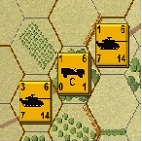
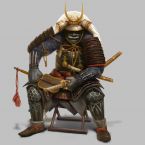
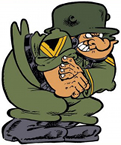
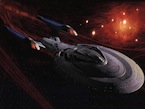


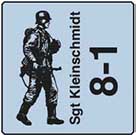

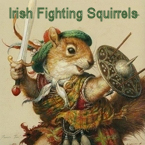
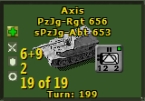

 New Messages
New Messages No New Messages
No New Messages Hot Topic w/ New Messages
Hot Topic w/ New Messages Hot Topic w/o New Messages
Hot Topic w/o New Messages Locked w/ New Messages
Locked w/ New Messages Locked w/o New Messages
Locked w/o New Messages Post New Thread
Post New Thread